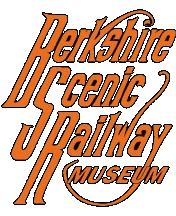New Haven Caboose C-591

The caboose was once found at the end of every freight train in America. It was the office for the conductor and his paperwork, and also carried the five-man crew that was required. The caboose was also “home-away-from-home” for crews on runs that would take them far away from their home terminal. With reductions in the crew, the need for cabooses diminished and most were eliminated from American railroads by the end of the 1980s.
Caboose C-591 is a former New York, New Haven, and Hartford Railroad class NE-5 caboose. It was built March 10, 1943, at the Pullman-Standard (formerly Osgood-Bradley) plant in Worcester, MA. In December 1952, C-591 was assigned to the New Haven’s experimental “Trailiner” piggy-back service. Of the two cabooses assigned to that service, C-591 is the last remaining. New Haven's Trailiner Service was a pioneering trailer on flatcar service (ToFC) which was a predecessor to today's modern intermodal service. The New Haven Railroad was not only progressive in its operational concepts, but also in its marketing activity - the experimental Trailiner service came with its own "Trailiner" logo. Three metal panels were affixed to C-591 and C-592. The lettering was 3M's "Scotchlite" reflective material and it is possible C-591 was one of the first pieces of railroad equipment to utilize the innovative decals which have become another railroad standard - just like intermodal truck -train service.
Built by Pullman-Standard, Osgood-Bradley Plant, Worcester, MA, March, 1943
Class NE-5
Weight: 143,900 lbs
After the New Haven Railroad was absorbed into the Penn Central in 1969, the caboose was re-designated as class NE-6 and renumbered 19841. BSRM purchased the caboose from successor Conrail in 1987 and it was restored to its New Haven appearance by our museum volunteers.
C-591 is on display outside Lenox Station and open for inspection. See the conductor’s desk, where he kept track of his train’s paperwork. Climb into the cupola, and imagine you’re the brakeman keeping watch over your train. See the stove that warmed the caboose and kept the coffee pot hot. Sit in the bunks that offered weary workers a precious few hours of rest. Visit and experience this piece of our railroad history and tradition.


